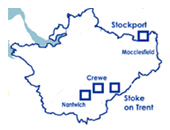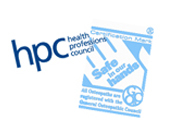Osteoporosis
Osteoporosis (brittle bone disease) is a very common condition affecting the bones of the skeleton. With osteoporosis, the bones begin losing their minerals and density, leaving the bones brittle and liable to fracture or breaks. Osteoporosis affects mostly people over age 65. About 80 percent of people with osteoporosis are women.
Bone fractures caused by osteoporosis have become very common with half of all bone fractures being related to osteoporosis. A person with a hip fracture actually has a risk of dying as a result of the fracture so it's important to avoid falls and to get treatment if you suspect that you may have osteoporosis.
The Causes of Osteoporosis
One of the main risk factors for osteoporosis is ageing. In women, the loss of Oestrogen in menopause causes bone loss with women over age 50 having a risk of fracture of about 75 percent.
Some common factors that predispose to Osteoporosis are:- advanced age; being a white female; low body mass or a thin and slender build; history of fractures; smoking; lack of exercise; certain drugs e.g. Steroids.
Symptoms
There are no symptoms with Osteoporosis until a bone breaks or fractures.
The disease can be discovered by a bone density scan - an easy and pain-free test.
Treatment
The best treatment available for Osteoporosis is medication from your GP as well as Calcium, Vitamin D and mineral supplements.
It is thought ;that increased calcium and Vit D intake alone could reduce the number of fractures by 10 percent.
Don't Smoke and Drink only in Moderation.
Try to eat enough food to maintain a healthy weight since, if you are too thin, your risk of osteoporotic fracture increases. Exercise is important to keep your bones strong. Even low levels of exercise can help you maintain better bone density: walking, stair climbing and dancing help stimulate bone density. Exercise with light weights can also be helpful.
Your osteopath may help you develop an exercise program with different types of exercises. Treatments also help people to gain muscle strength and improved posture.
Specific exercises are used to help you become straighter. This training can help patients who have stooped posture, called kyphosis, in the middle part of the back.
Balance is also important as falls can lead to multiple fractures and your Osteopath may advise exercises to improve your balance.


